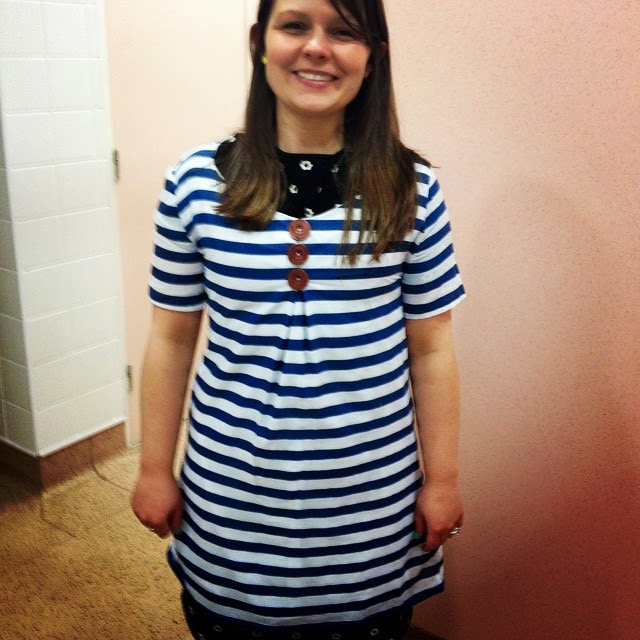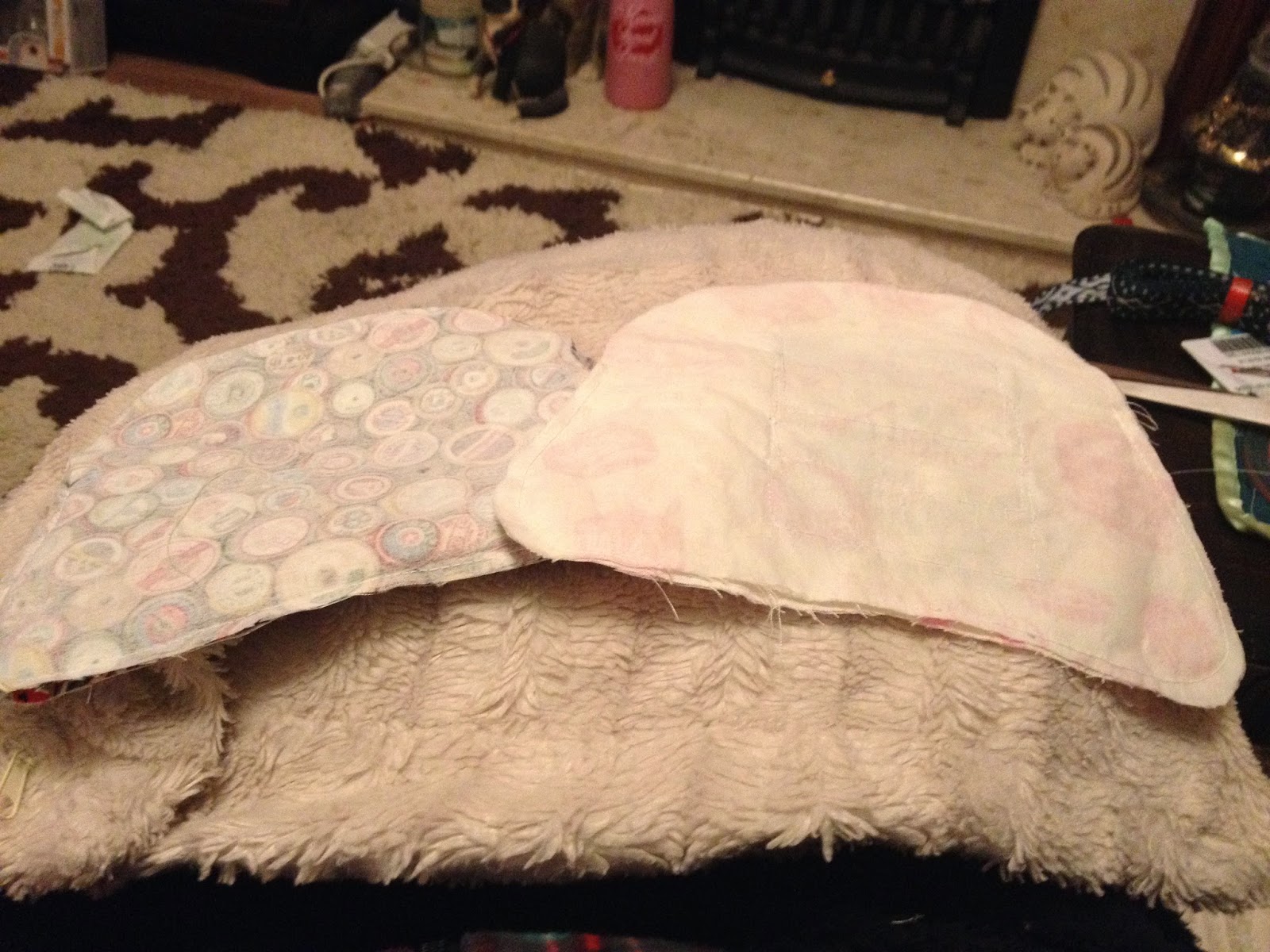Afternoon all! I hope you've all had a lovely week! As promised, here is part two of my circle skirt tutorial. If you have not yet drafted your pattern and want to make this, go here and follow my tutorial. Once you've done this you're more than welcome back into the loving sewing embrace of this tutorial. (That was an odd sentence...)
What You Will Need
- 3m - 4m of 45" width fabric, or 2m - 3m of 60" width fabric. (I'd go with a medium weight cotton, and steer clear of stretchy fabrics)
- 20cm zip
- A hook and eye (optional, and dependent on your zipper skills)
- Corresponding thread
- 1m of medium to heavy weight fusible interfacing
- Pattern pieces from previous tutorial
Let's just remind ourselves what we ended up with after we made our pattern pieces:
 |
| We have piece 1, which needs to be cut on the fold; pieces 2 and 3 which are cut from the same pattern piece, and the waistband which is also cut on the fold. |
Layplan and Cutting
1. How you devise your layplan depends on what the width of the fabric is. My sister's circle skirt was 45" width, and so the layplan looked like this. 45" width fabric is more common when it's the pretty patterns you're likely to want to use for a circle skirt, so hopefully this helps!
The waistband got cut from a length of scrap after this. Whether or not this works for you depends on your waist size and the length of the skirt, so you may have to alter things if it's not fitting.
However, the one I made for this tutorial was 60" width and I had 2.5m of it, which actually made life less complicated (and more economical).I folded it in half length ways so that piece one could be cut on the fold, and piece two could be pinned and cut to produce two pieces of fabric. Like so:
Cut all the pieces out (my favourite bit!) and you're ready to sew!
Sewing the Skirt
1. Sew the front skirt to the back skirt pieces at the side seams with a 1.5cm seam allowance. I sewed my skirt and my sister's using French seams, which gives it a nicer finish but it isn't necessary! Leave the centre back seam unstitched at this point.
Press open the seams on each side.
2. Affix the fusible interfacing to your waistband. My mum calls this iron on Vilene. Resist the urge to sing Iron-On Vilene to the tune of 'Come on Eileen'.
 |
| Step 3 |
4. Fold the waistband again gently lengthways and give it a wee press to find the centre. Match the centre of the waistband up with the centre fold of the front skirt, right sides together, and pin from the centre to each end of the waist of the skirt.
 |
| Step 4 |
 |
| Step 4 |
5. Now, stitch the waistband onto the skirt right sides together along the pressed fold line. Take this slowly and steadily, as waistbands are a pain to take out and redo if they're wobbly.
6. Press seam up towards the rest of the waistband (I originally wrote wardrobe, brain fart...).
7. So, this was the first circle skirt I made where I inserted zip before I finished the waistband. I was a bit sceptical but thought it might eliminate some difficulties I've had with zips before, and to my delight it did! It's the best zip insertion for me yet and I am so happy it was on a skirt I was making for someone else!
Place the zip where you want it and then mark where the end of the zip is onto the centre back seam. Once this is done you want to sew the centre back seam from the hem up to this mark using a 1.5cm seam allowance. Once this seam is stitched you can start inserting your zip.
Insert the zip with the top of the zipper tape just going past the fold of the waistband. This way it'll be sewn to the very top of the waistband and you won't actually need the hook and eye. If you find you've done it too low though and there's a gap at the top then just pop a hook and eye on and it won't make a great deal of difference.
 |
| Tack your zip first in different coloured thread so that you can easily take these stitches out once the machine stitches are done. |
8. Now, with the zip in fold the waistband over so that it meets your first waistband seam and hides it. Pin it in place.

Hemming
Hemming a circle skirt is notoriously difficult as the whole hem is on a curve and tricky to make the same length all the way around. In order to do this correctly I have tried many things, I've put it on Matilda the mannequin and measured and pinned meticulously for hours all the way around; my mum and I have fashioned together a sewing plumb line out of a box of staples and a scrap of fabric (doesn't work); I've laid down on the floor and looked right up the skirt with a spirit level. Finally, the most simple technique worked. I make life difficult for myself.
Get out your ironing board and rotate the skirt around, measuring the desired length from the waistband to the hem all the way round, plus 1cm for the hem. Work round, marking as you go, then go round again folding, pressing and pinning the hem in place, making tiny snips into the hemming allowance to reduce the bulk.
THEN! GET A HEMMING FOOT! This was the first time I'd ever used mine and it made a beautifully level hem that didn't gather or anything. Seriously, I was blown away! Keep to a 1-1.5cm hem, as too thick a hem will affect the way it hangs.
And with that, you're done! I add in this little label to the things I make for other people, until I get Sew Well Travelled ones made that is.
If you use this tutorial to make your own circle skirt please send me pictures on my social media profiles, which are linked at the top of the blog. OR, if you really don't want to make your own, visit my Etsy shop where you can commission me to make one for you (for a very good deal, taking into account the cost of fabric and the time it takes!)
Let me know how you get on, and until next time lovelies!
Kat xx































.jpg)













